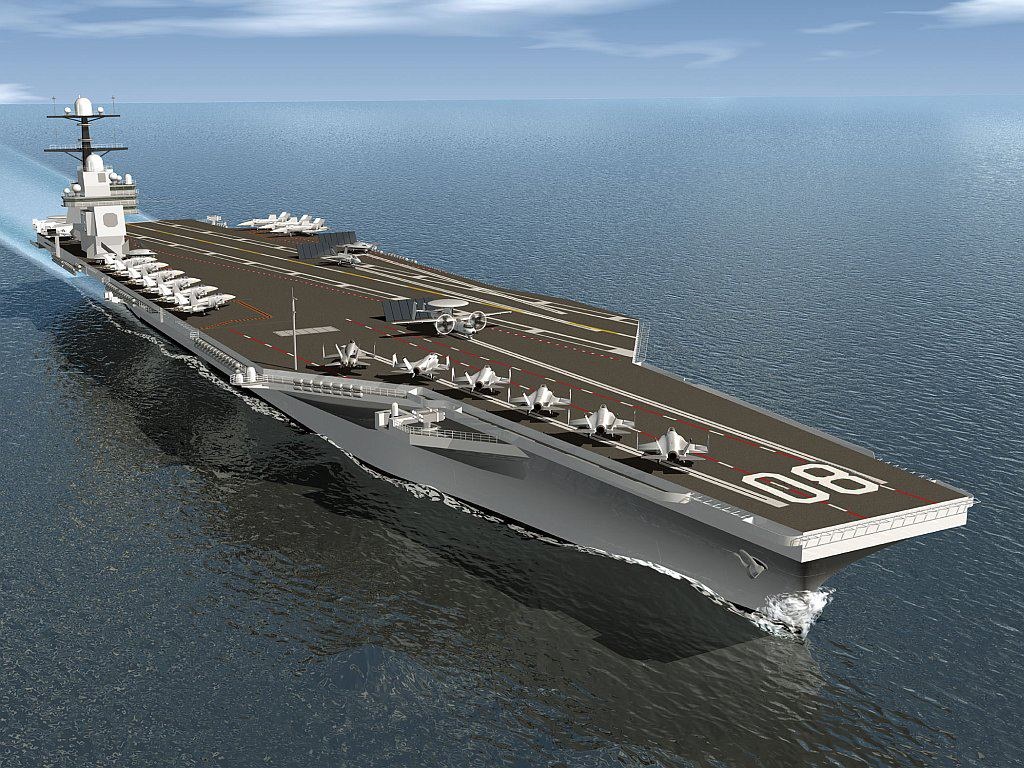
Newport News Shipbuilding is in the midst of several pilot programs aimed at creating a Smart Shipyard that could accommodate “drawingless” plans for the Enterprise CVN-80 aircraft carrier, company officials told USNI News.
Huntington Ingalls Industries President and CEO Mike Petters told USNI News in February that he hoped CVN-80 would have no paper, two-dimensional drawings but instead would be all digital and all 3D. HII’s Newport News yard has taken the lead on this initiative and estimates that creating an integrated digital shipbuilding environment could generate more than 15-percent cost savings on the third Ford-class aircraft carrier, NNS president Matt Mulherin said May 17 at the Navy League’s Sea-Air-Space Exposition 2016.
“My vision for this whole thing is, you’ve seen the Redbox where you can check out movies – … you go down and you can just tell the Redbox who you are and then it gives you an iPad with your work downloaded for the day, and off you go and go do your work,” Mulherin told reporters at a media briefing.
“It will have delivered the material to the deckplates. You’ll have everything you need to be able to go to work. And at the end of the day you’ll put your iPad back in and it now knows what progress you made, and it updates it for tomorrow.”
Petters described the benefits of a digital shipyard in terms of training – having 3D models of the ship would make it more intuitive to build and operate the ship, saving training dollars for the shipyard and the Navy. Mulherin also focused on the impact to the builders, saying that “mbedded in [the digital work packages] are training videos – think of YouTube videos that you can pull up that … refresh you on training for something you’re about to do, show you some safety videos, things that you ought to think about as the mechanic does his work.”
But in creating a digital shipyard that can do that much in aiding shipbuilders, Newport News Shipbuilding would actually set itself up for something even bigger.
Mary Claire McLaughlin, an augmented reality engineer at NNS, told USNI News at the conference that the heart of a 3D Product Model Environment is a computing environment that is “the single source of truth” for all activities at the shipyard – all the designs for all the ships being built, the status of inspections, the list of materials needed to build the ship and their status and location, and so on. Once that information is all in a centralized computer system, everyone working at the yard can find a way to pull information or add in information.
McLaughlin’s vision is “having our entire yard wired so that when new things happen like the popups you’re seeing that say ‘work package complete,’ you can instantly get that information,” she said, showing off an interactive map of the shipyard depicting how all the business functions could make use of the Smart Shipyard concept.
“‘Material received,’ you instantly know it’s in. ‘This inspection is complete.’ So you start to streamline your entire process because your information is all flowing from every area.”
In addition to the animated work packages that remind builders how to install parts and embed safety and training videos, this kind of real-time network of information would vastly improve efficiency, she said, avoiding trips across the yard to check on the status of materials, or pausing for an unknown duration while awaiting someone else to complete their job.
Though Mulherin wouldn’t talk about savings in terms of dollars, he said the yard could see “certainly more than 15-percent savings” once the digital environment is up and running. Several ongoing pilot programs with the future John F. Kennedy (CVN-79) – including distributing 150 tablets and digitizing more than 1,000 work packages, McLaughlin explained – have yielded “pretty significant savings,” Mulherin added.
Another pilot program involves a laser scanner to help create 3D images of spaces that were originally built using paper drawings – chiefly, spaces on the Nimitz-class carriers that NNS is in charge of refueling and overhauling during a mid-life docking period.
“What we’ve found and had some real success with is this laser scanning, where if you don’t have a 3D product model you will … laser scan the millions of data points, and create at least a model of that space that you can then use in this digital environment” in future ship availabilities, he said.
In the process of everyone using tablets to go about their daily work, the system would end up collecting inspection records, maintenance logs and more that could be analyzed to help become more efficient in the future and to create more accountability.
“Once we have all that data, what do you do with it?” McLaughlin said.
““Once you’re equipped with the tablet, what kind of information can you pull?”





